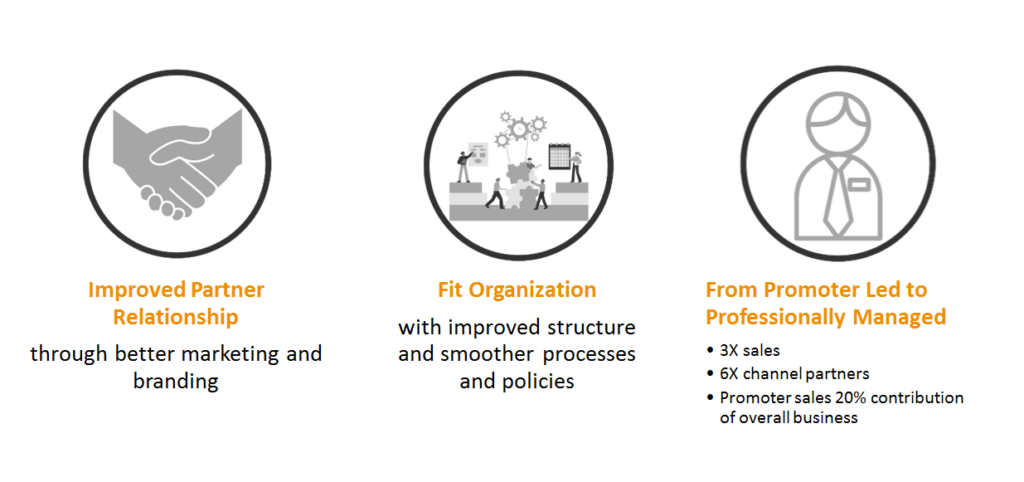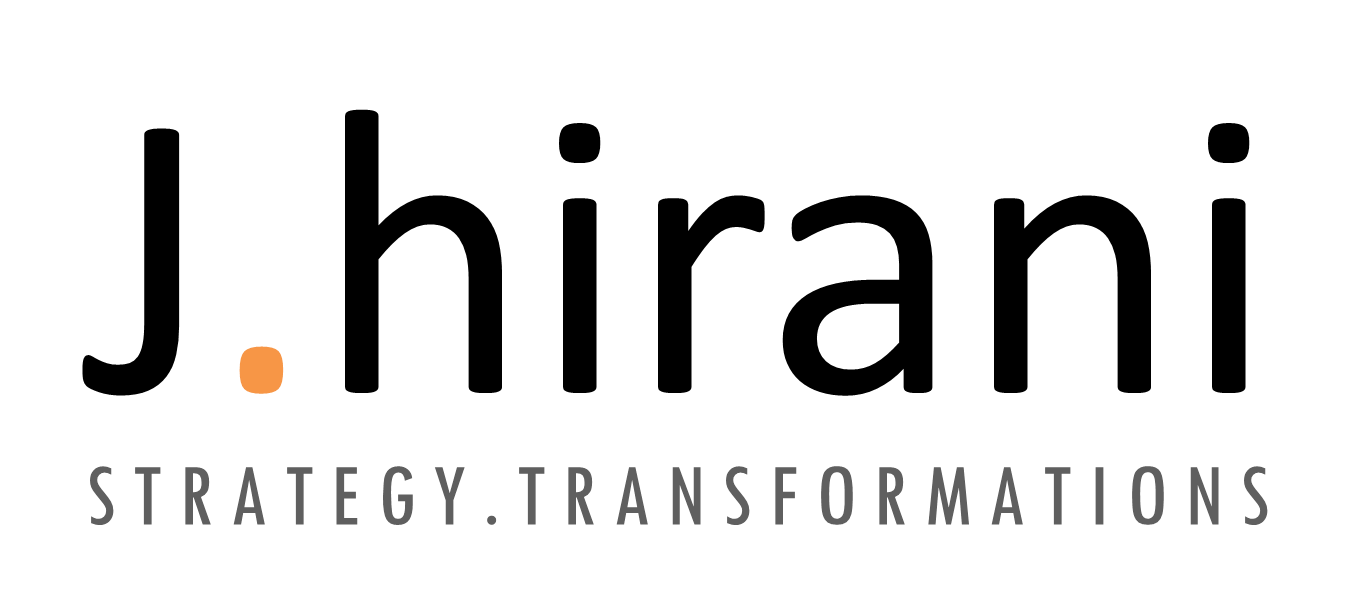Explore case study on Quba’s humble journey beginning from a small office in Rajkot, Gujarat to becoming a recognized and trusted Architectural Hardware Brand in India; by building on its foundations and realizing dreams of being functional and chic.
Results in a Nut Shell

What led to the Decision
- It was found that the company’s was not growing at desired rate. Less and less time was attributed to strategic planning and growth initiatives.
- We realised that introducing new / professional capabilities can help multiply leveraging the product platform they had created.
- The gradual increase in loyal customers presents an opportunity for growth, but it also underscores the need for a more defined brand identity. To meet these demands, it became essential to create a clear strategy and build a dedicated management team. A more structured organization to enable smoother operations and provide the critical data needed for informed business decisions.
- By addressing these operational gaps and improving coordination, efficiency could be enhanced. To support these efforts, it was planned to focus on streamlining warehouse costs and speeding up product distribution building a stronger, more resilient business.
Key Solutions
- Turnkey business transformation by J.hirani project team
- Building an ecosystem with new structure and processes
- Design of strong policies to avoid commercial and legal challenges during expansion
- New brand image with BTL strategies and execution management
- Dealer programs and schemes for long term commitment and higher sales.
- Call centre set up attending to customer voice
- Assisting product strategy and map
- Designing the revenue strategy along with a strong distribution system
- Strategies for attracting right man power
- Dashboards for reviewing business
How we Achieved it
- From basic business to professionally run organization
- Moving founders from operations and sales by revising their roles
- Recruiting new team
- Sales and Marketing strategy for growth
- Smoothening operations with a new structure and SOPs
Facts About Quba
An architectural hardware brand catering all over India with its well engineered products
- Established in 2010
- Employees: 200+
- Corporate: Mumbai, India
Quba architectural products was established in 2010 reaching around 500 dealers across India in a short span of time. This heavy founder led business, had two core strengths- its products and market. When J.hirani came across this bright eyed business for the first time, its sales were 90% founder led with only a few markets having sales members. There were a handful of executives operating from a small office in Rajkot looking after back office transactions management and warehousing.
SITUATION AT HAND
Consistent dreaming, need for a master plan
With well-designed products and decent market penetration, Quba was happy and managing its activities well. What it did not want, was to stay consistent in the same speed of growth. It wanted to expand and build big. The dream was apparent; but with lack of comprehensive planning.
With passing of time, Quba was growing, but a closer look at data revealed a challenge. It was not able to add new loyal customers. The existing customers had direct relationship with promoters which required them to invest major time in managing the existing customers.
Apart from lack of strategies on new customer acquisition, it was also affected by industry competition. Industry worked on the model of commissions, relationship building schemes was upheld by other brands to build on sales from counters.
Management and executives with no in between
Quba was formed by its founders combining their varied strengths. While one took after products, the others took to sales and finance. They were excellent and passionate salesmen who knew from day one what they wanted to place in the market. And they achieved it remarkably well.
The key function in the business was restricted to sales and processing those sales.
While this was running ok, with growing volumes, came in multiple internal as well as external challenges. A lack of managerial input spread with symptoms of team inability to plan ahead and show their true orientation towards work. Team commitment was not the issue but team management needed to establish. A lack of sales ecosystem resulted in frustrations of founders coming from sparse knowledge of business numbers, unheard customers, decreasing counter strengths and inactivating dealers due to absence of relationship management planning.
Lagging Operations
There was an absence of ecosystem encompassing important functions, activities and team. People and Management were doing what was required. The work culture required clear rules and responsibilities to make planning efficient. And therefore all functions from sales, procurement, back office, accounting to warehousing were not based on planning.
Bottle necks ran deep due to absence of plans and job responsibilities.
STEPS AHEAD
A new face of sales
The first pillar J.hirani established was how the business was operated. It was important to have founders available to guide strategically and pass on the managerial and operations role to J.hirani team. J.hirani would focus on the project as turn-key, confirming the desired culture and operations and then passing it back to a professional team.
It was imperative that founders dealt with important functions by taking time out from field sales.
Therefore, the second pillar J.hirani established was a new face of Quba. By bringing in a professional sales team, new brand identity in the market, and a customer support center.
Quba identified itself with an established sports person as the brand ambassador. The existing energy of buoyancy, reliable people and strong product strategy was reflected through a market image building exercise.
Various BTL strategies were implemented to reflect the internal language externally. A professional sales and support team was recruited and oriented.
The market commission model was framed with attractive dealer program and schemes.
The transformation of roles by founder and teams were supported by instituting policies and processes capturing the essence of what founders believed in.
In a period of 3 years, Quba was able to experience improved partner relationship, culture and operations.
- The sales increased to 3 fold
- Geographically, it expanded existing portfolio of 500 to 3000 dealers, currently (10,000 dealers)
- The founder led sales was reduced to 20% from 90%
Keying even operations
The third important pillar established was a new structure and process. What was needed was a flexible structure that would support expansion of teams as we grow in sales. Operations were designed to match the speed of growth expected.
With the changes Quba was undergoing, it would be necessary to tweak operations and structures as we go. For this, existing team were hands on involved to imbibe such flexibility to adapt frequent re-arrangements during transformation. At the same time, professionals at higher positions provided with hands on support to establish a foundation and thriving culture where future additions would be easy.
The project team at J.hirani took to this challenge through various trainings, mentorship programs, online and on-site visits. A substantial multilevel project was executed in spirit eyeing to the goal. J.hirani project team spread to all functions- operations, marketing, HR, finance, sales and sales support.
The result was a smooth functioning business knowing what they were doing, being agile and supporting constant growth efforts.
Teams had their work plans, sales team had their data, founders had a growing business, culture was agile, customers were heard and market was aware of the brand.
Quba was able to and is upholding its position of a professional brand with fun at heart individuals.
A lot of time and effort was spent in implementation programs to ensure people know what they are working on, have meaningful work, and are able to perform and work cohesively. Teams were mentored on value chain, roles of departments and how to work in teams- giving a sense of how each area of work affects others


